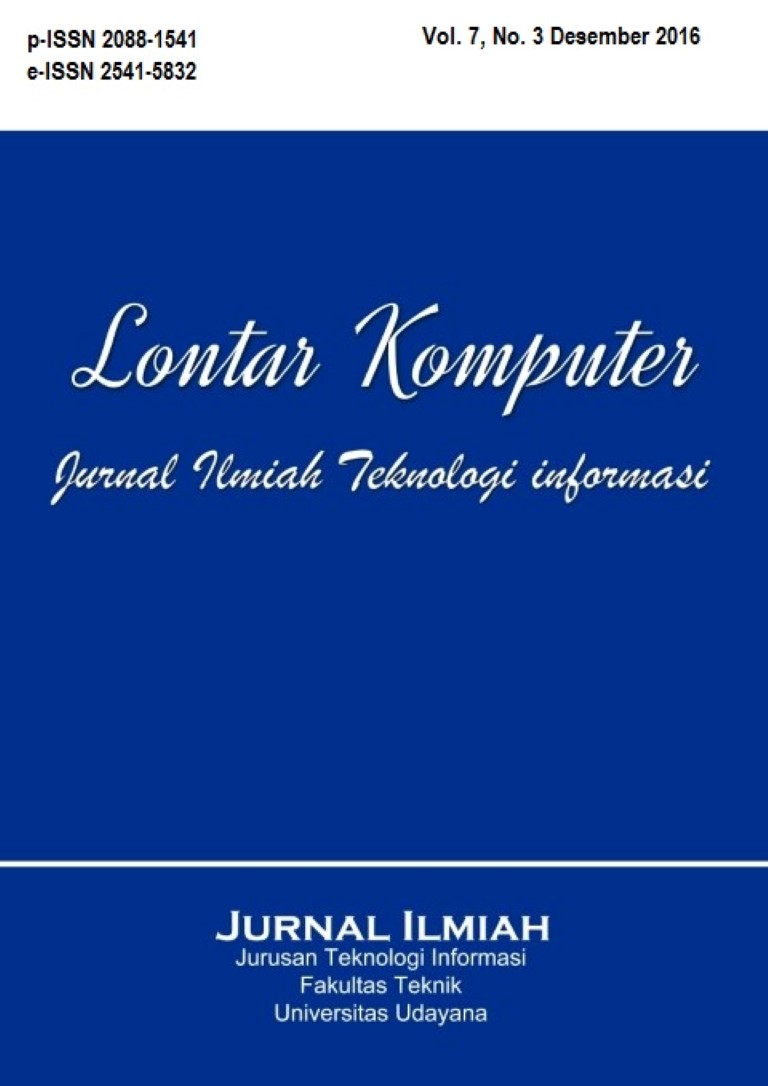Optimalisasi Penyelesaian Knapsack Problem Dengan Algoritma Genetika
Abstract
Knapsack problems is a problem that often we encounter in everyday life. Knapsack problem itself is a problem where a person faced with the problems of optimization on the selection of objects that can be inserted into the container which has limited space or capacity. Problems knapsack problem can be solved by various optimization algorithms, one of which uses a genetic algorithm. Genetic algorithms in solving problems mimicking the theory of evolution of living creatures. The components of the genetic algorithm is composed of a population consisting of a collection of individuals who are candidates for the solution of problems knapsack. The process of evolution goes dimulasi of the selection process, crossovers and mutations in each individual in order to obtain a new population. The evolutionary process will be repeated until it meets the criteria o f an optimum of the resulting solution. The problems highlighted in this research is how to resolve the problem by applying a genetic algorithm knapsack. The results obtained by the testing of the system is built, that the knapsack problem can optimize the placement of goods in containers or capacity available. Optimizing the knapsack problem can be maximized with the appropriate input parameters.
Downloads
References
[2] K. D. KW, M. Fadhli, and C. Sutanto, “Penyelesaian Knapsack Problem Menggunakan Algoritma Genetika,” Seminar Nasional Informatika, 2010, pp. 28–33.
[3] Suyanto, Evolutionary Computation: Komputasi Berbasis Evolusi dan Genetika. Bandung: Informatika, 2008.
[4] M. Hristakeva and D. Shrestha, “Solving the 0-1 knapsack problem with genetic algorithms,” Proceedings of the 37 Midwest Instruction and Computing Symposium, 2004, Morris, MN.
[5] S. Kusumadewi, Artificial Intelligence (Teknik dan Aplikasinya). Yogyakarta: Graha Ilmu, 2003.
Keywords
The Authors submitting a manuscript do so on the understanding that if accepted for publication, the copyright of the article shall be assigned to Jurnal Lontar Komputer as the publisher of the journal. Copyright encompasses exclusive rights to reproduce and deliver the article in all forms and media, as well as translations. The reproduction of any part of this journal (printed or online) will be allowed only with written permission from Jurnal Lontar Komputer. The Editorial Board of Jurnal Lontar Komputer makes every effort to ensure that no wrong or misleading data, opinions, or statements be published in the journal.
 This work is licensed under a Creative Commons Attribution 4.0 International License.
This work is licensed under a Creative Commons Attribution 4.0 International License.























